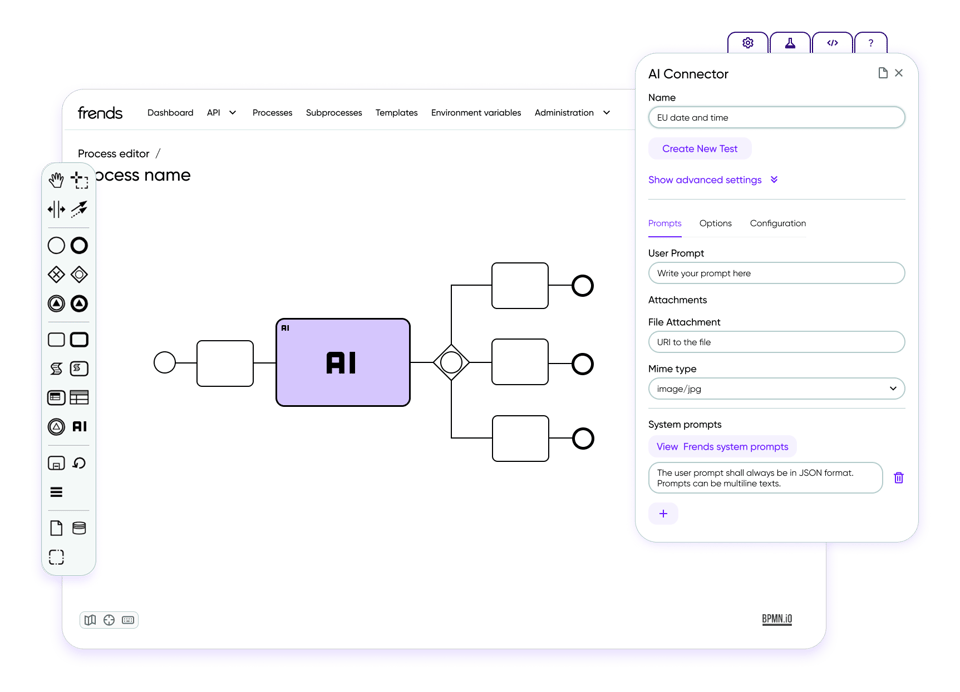Discover how Frends 6.1’s Intelligent AI Connector turns AI capabilities into scalable, transparent workflows that deliver real business value.
Most enterprise AI experiences don’t fail because they lack AI tools; they fail because those tools never leave the lab. Demos impress, pilots excite, but when it’s time to scale, workflows break down, governance is missing, and trust evaporates. That’s the AI paradox facing CIOs today: plenty of proof-of-concepts, but very little proof of value.
AI adoption in enterprises has been enthusiastic but not transformative. According to MIT’s "State of AI in Business 2025" report, 60% of organizations have evaluated AI tools, 20% reached pilot stage, but only 5% made it to production. The failure rate is staggering: brittle workflows, lack of contextual learning, and the inability to embed AI into day-to-day operations leave most initiatives stranded. This has created what MIT calls the GenAI Divide, a gap between companies that remain stuck in pilots and those who scale AI into real workflows.
Frends 6.1, the platform's latest launch — available from Sept. 2, 2025 to current and new customers —, addresses this divide head-on with its major new feature: the Intelligent AI Connector. Instead of treating AI as an isolated chatbot or demo, the connector allows organizations to embed reasoning models directly into automated workflows, governed by transparency, compliance, and measurable ROI.
From experiments to scalable AI workflows
“The benefits don’t come from pilots or ChatGPT. The benefits come when we integrate AI into business processes and actually get AI to do the thing — not just be a chat,” explains Asmo Urpilainen, Chief Product Officer at Frends.
The Intelligent AI Connector makes this integration practical. It introduces a new AI shape inside Frends’ BPMN 2.0 workflow engine. Developers and business teams can drag and drop the connector, define input and prompts, and let the model process information with context. Crucially, the connector produces not just an output, but also a reasoning log with a step-by-step explanation of why the AI arrived at its result.
This matters because enterprises are struggling with trust. As one MIT interviewee put it: “If it doesn’t plug into Salesforce or our internal systems, no one’s going to use it.” Another added: “I can’t risk client data mixing with someone else’s model.” The Intelligent AI Connector directly tackles both by ensuring seamless integration with existing systems and supporting on-premises or local AI deployment for maximum data control.
Technical value: Why this Connector scales
The Frends Intelligent AI Connector solves the practical blockers that keep AI stuck in the lab:
- Context-driven orchestration: Single-step prompts fail at scale. Frends chains prompts into workflows, adapting logic as the process unfolds.
- Transparent operations: Every AI action is logged with inputs, outputs, and reasoning, ensuring explainability instead of a “black box.”
- Cost visibility: Token usage and projected AI costs are shown during development and runtime, preventing runaway bills.
- Enterprise compliance: Organizations can run models via Azure OpenAI, Hugging Face, or their own local deployment, satisfying strict GDPR and sovereignty requirements.
- Business-first usability: Prompts can be written in natural language, allowing process owners — not just developers — to configure and adjust workflows without retraining models.
Asmo summarizes it best:
“What’s unique is not just that we call an AI model. Anyone can do that in a minute. What matters is all the orchestration and governance around it, making AI usable in production, not just in a demo.”
The timing couldn’t be more critical
MIT’s research notes that while 90% of enterprises have seriously explored buying AI solutions, only 5% have achieved scaled adoption. The paradox is striking: large firms lead in pilot volume but lag behind smaller companies in scaling.
Meanwhile, the study found that some of the fastest ROI came not from sales and marketing — where 50% of AI budgets flow — but from back-office automation, where integrations delivered measurable cost savings. This aligns directly with Frends’ approach: embedding AI into integration workflows where repetitive, cognitive tasks eat up resources.
Beyond pilots: Enabling measurable value
Frends 6.1 marks the first stage of its Agentic AI roadmap. The Intelligent AI Connector is designed to get organizations past pilots and into production-grade AI workflows. Later releases will introduce the AI Toolbox and advanced orchestration features, allowing even more autonomy while maintaining governance.
By positioning AI not as a sidecar but as a native building block of enterprise automation, Frends enables organizations to:
- Automate 70% of repetitive or decision-based tickets, cutting handling times from minutes to seconds.
- Route emails, orders, and invoices in real time without custom code.
- Combine AI reasoning with system APIs to simulate human-like decision-making in processes.
The message is clear: AI value is created when orchestration meets transparency.
The iPaaS that supports business growth
AI initiatives fail when they stay siloed, brittle, or unexplainable. With Frends 6.1, enterprises get an integration-first approach where AI is not a gimmick, but a trusted part of the automation stack.
Or, as Asmo puts it:
“Customers don’t want magic. They want AI that integrates, scales, and explains itself. That’s exactly what we built into the Intelligent AI Connector.”
